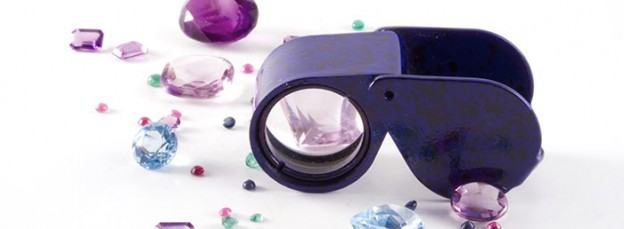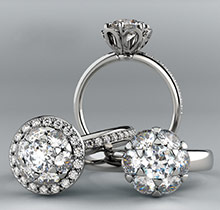Colored gemstones make a beautiful addition to any jewelry collection. Colored gemstones are often chosen for favorite color, fashion trends, or to match wardrobe pieces. Like diamonds, several factors affect the price of colored gemstones. Unlike diamonds, there is no particular order of importance of the criteria.
Colored gemstones are graded much like diamonds, using the 4 C’s: color, clarity, cut, and carat weight.
Color
Many jewelers consider color the most important factor in determining the value of a gemstone. The color of a stone is composed of hue, tone, and saturation. The hue is the basic color of the stone, the tone is the degree of lightness or darkness, and the saturation is the degree of purity or intensity of the color. Each gemstone has a preferred range of colors that are most valuable. As the color varies from the range, either lighter or darker, the value of the stone decreases. Gemstones with vivid, saturated, and even colors tend to be most valuable.
Clarity
Clarity refers to the freedom of a gemstone from inclusions, blemishes and irregularities. Flawlessness is rarer in gemstones than in diamonds. Most gemstones have some inclusions. While some inclusions can be seen with the naked eye, many can only be seen using a loupe. Gemstones with fewer clarity characteristics are rarer, and therefore more valuable. Each gemstone has its own clarity standards and can only be judged against the standards for that stone. For example, you can’t compare the clarity of a sapphire with the clarity of an emerald. Green tourmaline, tanzanite, blue topaz, blue zircon, and blue spinel typically have very few or no inclusions. Alexandrite, garnets, smoky quartz, green zircon, amethyst, sapphire, rubies, and orange zircon typically have some clarity characteristics. Emerald and watermelon tourmaline almost always have clarity characteristics.
Cut
Cut refers to the shape or design of the stone and the arrangement of the facets. The cut determines the beauty of the stone. A stone with a large area of brilliance and color when it is facing up best reveals the beauty of the gem. Common cuts include oval, emerald, pear, round, marquise, and princess.
Carat Weight
The size of a gemstone is determined by the weight rather than the dimension. Two different gemstones can have the same dimension but different carat weights. A gemstone with a higher carat weight will have a higher price. In fact, as the carat weight increases, the price increases at an exponential rate. This is because larger gemstones are increasingly rarer.
In the end, judging the value of a gemstone really boils down to personal preference and which factor is most important to you.


